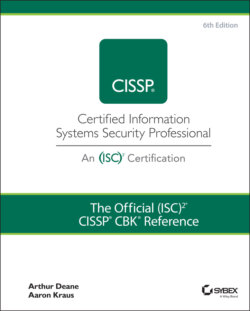Читать книгу The Official (ISC)2 CISSP CBK Reference - Leslie Fife, Aaron Kraus - Страница 51
System and Organization Controls
ОглавлениеOften confused with SOX (discussed previously), SOC stands for System and Organization Controls and is an auditing framework that gives organizations the flexibility to be audited based on their own needs. There are three commonly used types of SOC audits and reports, aptly named SOC 1, SOC 2, and SOC 3. The three audit and report types align with standards outlined in Statement on Standards for Attestation Engagements (SSAE) 18, which was published by the American Institute of Certified Public Accountants (AICPA) in 2017 (with amendments made via SSAE 20 in 2019).
SOC 1: An audit and compliance report that focuses strictly on a company's financial statements and controls that can impact a customer's financial statements. A company that performs credit card processing is likely to require a SOC 1 audit and compliance report.
SOC 2: An audit and compliance report that evaluates an organization based on AICPA's five “Trust Services principles”: privacy, security, availability, processing integrity, and confidentiality. Many organizations undergo SOC 2 auditing and present a SOC 2 report to regulators and customers to demonstrate compliance with industry standard security controls.
SOC 3: This is a “lite” version of a SOC 2 report and abstracts or removes all sensitive details. A SOC 3 report generally indicates whether an organization has demonstrated each of the five Trust Services principles without disclosing specifics (like exactly what they do or don't do). Companies make SOC 3 reports available to the public and restrict SOC 2 reports to trusted parties.
